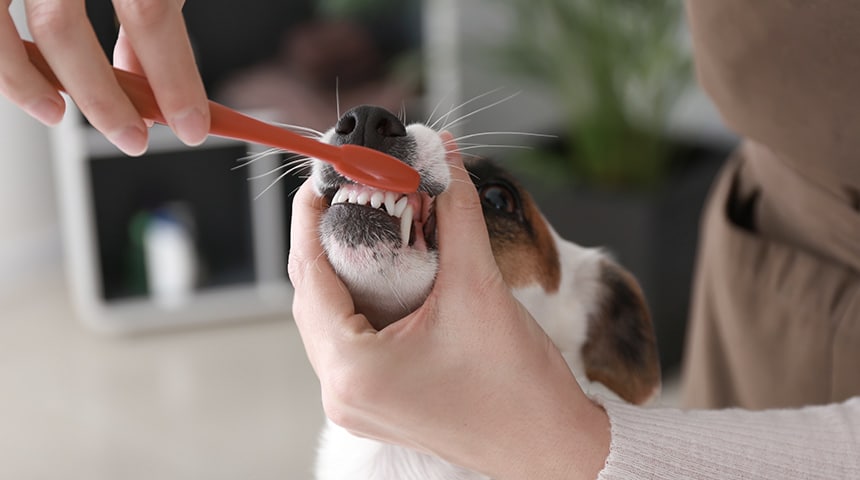
Did you know that shortcomings in your dog's oral hygiene could have serious health repercussions? The presence of tartar on his teeth is only the tip of the iceberg! Gingivitis, bad breath, tooth abscesses, tooth loss are signs that must be monitored. We recommend regular tooth brushing to help your companion maintain a good dentition and avoid the worst.
You don’t have to be a dentist to prevent all those disastrous side effects! Here are 4 simple steps to get doggie accustomed to regular tooth brushing!
- Toothpaste can taste good, after all!First and foremost, know that it can be dangerous to use a human toothpaste. It may contain some ingredients that can be toxic to your pet. You must therefore get a toothpaste designed specifically for animals. Fortunately, there are some products with more appealing flavors, such as chicken, beef and vanilla. Then, all you have to do is get your dog used to the taste of the chosen toothpaste. Put a small amount of the product on your finger and give him the opportunity to taste it. You can repeat this for a few days for him to get used to the taste and texture.
- Play with his lips!Once he's used to the taste of toothpaste, get your dog accustomed to you manipulating his lips. It can be strange for an animal to have someone play in their mouth, so you should proceed gradually and gently. Put some toothpaste on your index finger, gently open your dog's mouth and spread the paste on his teeth. Again, repeat this step for several days.
- Introducing the toothbrush.Now is the time to introduce the toothbrush into your routine. To start, you will only brush your dog’s canines! Using a toothbrush and a small amount of toothpaste, brush the canines up and down from the gums. After a few days, you can move on to the next step.
- It's time for a complete brushing!Now is the time to get down to business! Start brushing your dog’s canines, as done previously then go slowly towards the back of their mouth. You do not have to go vigorously, your companion may not appreciate it! With regards to the ideal brushing frequency for a dog, we would tell you that daily is ideal. Or at least, as often as you can!
For a video explanation, click here: to view the video.
Did you know? On the nutrition front, there are dog food and treats specially designed for bad breath and tartar. Get in touch with our team!

